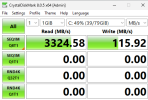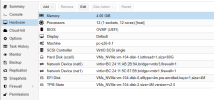Anyone able to help on why I'm getting such slow write speeds on an NVMe drive in a Windows 11 VM? I benchmarked this drive before I installed it into a Proxmox machine and was getting 5000+ MB/s write speed.
I'm running the VirtIO SCSI single controller with the latest VirtIO drivers.
I'm running the VirtIO SCSI single controller with the latest VirtIO drivers.



